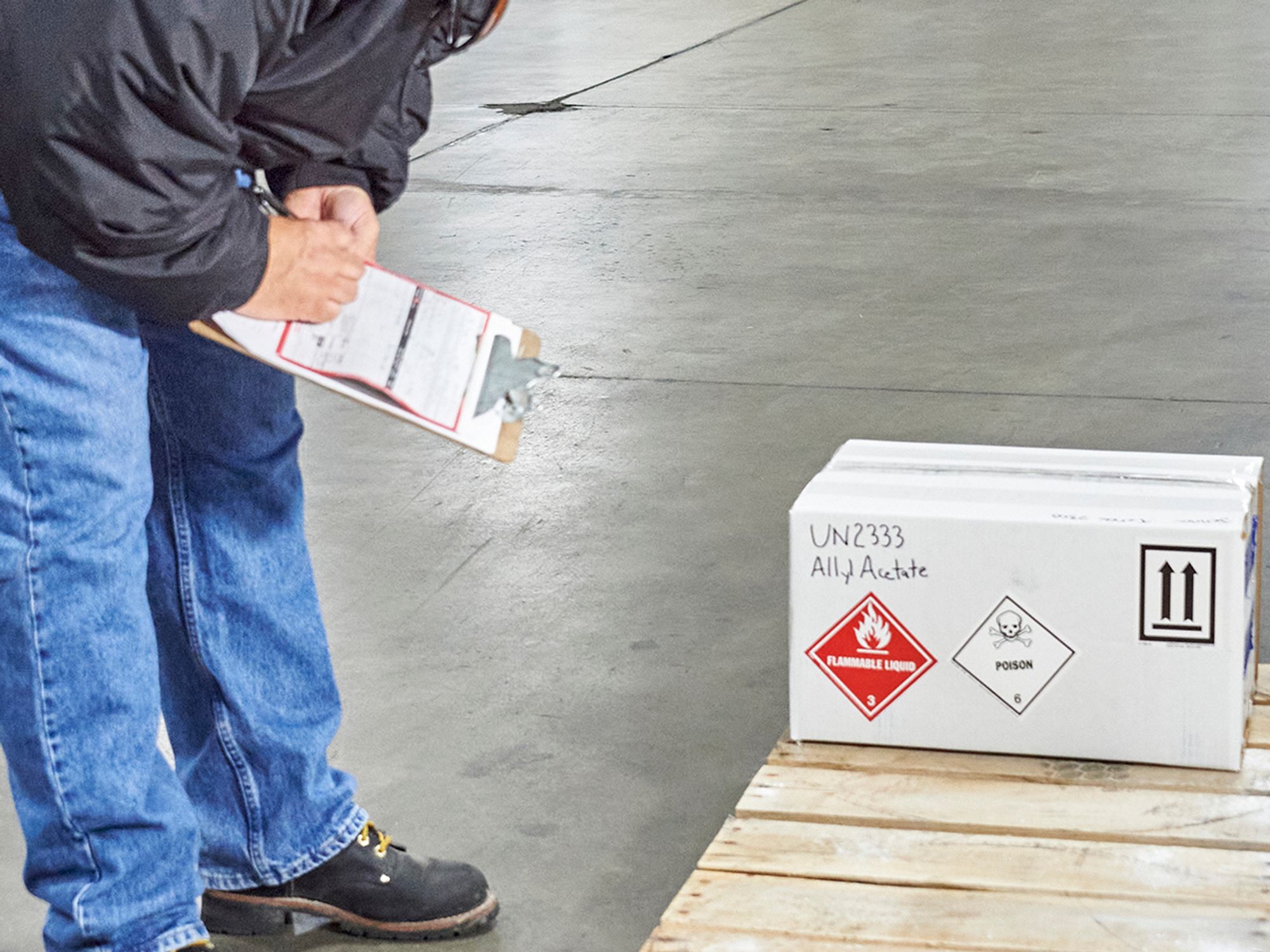Packaging compatibility

- The person offering the hazardous material for transport must ensure compatibility of the packagings and the HM.
It is the responsibility of the person offering a hazardous material for transportation to ensure that the packagings are compatible with the hazardous material they are used for. This particularly applies to corrosivity, permeability, softening, premature aging, and embrittlement.
Packaging materials and contents must be such that there will be no significant chemical or galvanic reaction between the materials and contents of the package.
Plastic packagings and receptacles
Plastic used in packagings and receptacles must be of a type compatible with the hazardous material the packaging will be used for and may not be permeable to an extent that a hazardous condition is likely to occur during transportation, handling, or refilling.
Each plastic packaging or receptacle which is used for liquid hazardous materials must be capable of withstanding without failure the procedure specified in Appendix B of Part 173 - Procedure for Testing Chemical Compatibility and Rate of Permeation in Plastic Packagings and Receptacles. See Section 173.24(e)(3)(ii) and (iii) for more specific information about required testing results.
Compatibility
Hazardous materials may not be packed or mixed together in the same outer packaging with other hazardous or nonhazardous materials if such materials are capable of reacting dangerously with each other and causing:
- Combustion or dangerous evolution of heat:
- Evolution of flammable, poisonous, or asphyxiant gases; or
- Formation of unstable or corrosive materials.
Packagings for solids which may change state during transportation
Packagings used for solids, which may become liquid at temperatures likely to be encountered during transportation, must be capable of containing the hazardous material in the liquid state.
